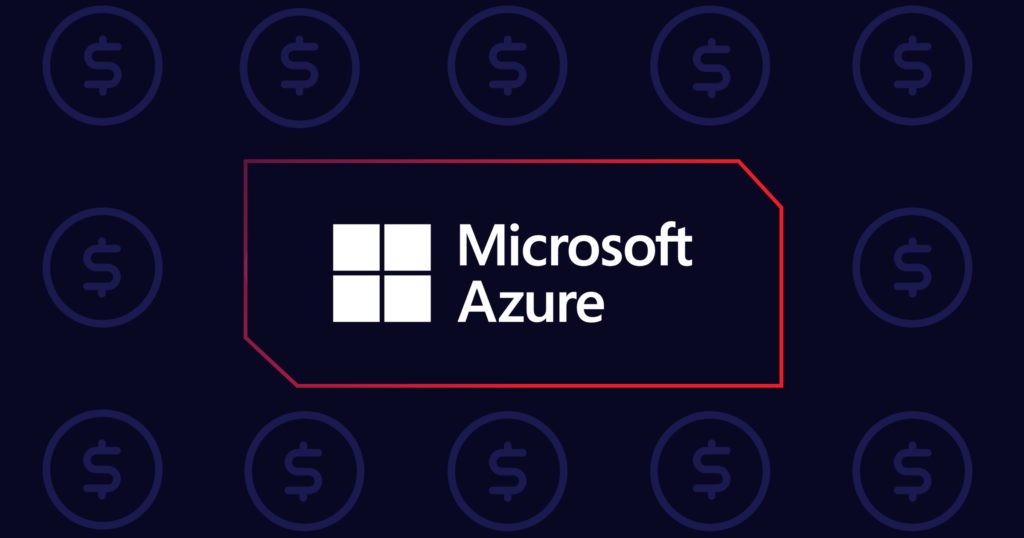
Lowering Egress Fees in Microsoft Azure with SDCI
- Cloud networking , Partners
- October 6, 2021
- RSS Feed
There are lots of names for the method of optimizing SD-WAN connectivity, but one thing is certain: It can save you lots of money on egress fees.
As we’ve written about before, transferring data from your on-premises environments to Microsoft Azure (“inbound” or “ingress”) is free for both public internet connections and Azure ExpressRoute, but the data transfer fees for pulling data out of Azure (“outbound” or “egress”) vary depending on whether you are utilizing the public internet or using Azure ExpressRoute.
Major public cloud providers, including Azure, AWS, Google Cloud, and others, often financially incentivize customers to adopt private interconnection by reducing the “outbound” charges associated with public internet. The cost of egress data sent over the public internet is based on volume. In the US, for example, the egress fee for Azure ExpressRoute starts at $0.025 per GB of data transferred. These egress fees are on top of your monthly ExpressRoute port fees.
If you’re pushing terabytes of data through your ExpressRoute circuit, it’s easy to see how monthly egress fees can add up quickly and bust your IT budgets. But what’s the most sustainable way to keep your egress costs in check?
Take a deeper dive into Microsoft Azure ExpressRoute Pricing in our blog post.
On-demand Private Connectivity
As we covered in our blog post “Comparing Your Multicloud Connectivity Options,” there are several ways to achieve private connectivity and avoid exorbitant egress fees. One way is to purchase private cloud ports directly from your cloud provider; for Azure, you would just purchase an ExpressRoute circuit. But if you’re using multiple clouds, which 90% of organizations plan on doing, according to IDC, then this limits you to a one-to-one approach.
Enterprises can also benefit from a one-to-many approach to cloud connectivity, which Network as a Service (NaaS) providers can supply with Virtual Cross Connects (VXCs). VXCs are Layer 2 VLANs for interconnection to cloud services, including (but not limited to) Microsoft Azure.
Another way to achieve private connectivity to skirt egress fees is to order a static private line from a carrier or ISP each time you need access to a new region, environment, or cloud provider. However, the problem with this method is that installations can take anywhere from 30 to 120 days to install, as often someone from the ISP has to physically do the installation.
With Megaport, because our global, private network is pre-provisioned across over 700 data centers, over 100 unique data center operators, and 23 countries, establishing a private connection to Azure is as simple as ordering another VXC from your existing access port. The VXC can be ready in a matter of minutes—not days, weeks, or months—and is easily scaled to meet your business needs.
Learn more about when to use ExpressRoute Local for Microsoft Azure private peering.
Branch-to-cloud ExpressRoute connectivity
When large enterprises have modernized their WAN by using an SD-WAN solution to help orchestrate traffic across numerous sites, regions, and branches, they still often connect those branches to the cloud with IPsec tunnels that run over the internet; you can learn more about this in our recent post “The Hidden Cost of Running Cloud-Hosted SD-WAN for IaaS.” But of course, these enterprises will run into the same challenge with high egress fees because they’ll be paying per GB of data exiting their cloud provider, in this case, Microsoft Azure.
The other way for SD-WAN branches to connect to Azure is to use an Azure-hosted version of your SD-WAN vendor’s virtual machines. But you’d still be running IPsec tunnels to your cloud-hosted SD-WAN instance – and still be subject to higher egress fees from exiting traffic out of Azure into the public internet. When you’re moving high amounts of data across numerous sites, regions, branch locations, and mobile and IoT devices, these egress fees can be staggering.
Find out how to avoid cloud bill shock with Azure ExpressRoute Local.
Using SDCI or Megaport Virtual Edge (MVE) to reduce ExpressRoute egress fees
There are many names for the method of optimizing SD-WAN connectivity from branch to cloud and from site to site. Gartner calls it Software Defined Interconnection or SDCI, and our partner Cisco calls their offering Cisco SD-WAN Cloud Interconnect with Megaport.
Whatever name you prefer, using Megaport Virtual Edge with your SD-WAN solution to connect your branches to multiple clouds can reduce cloud data egress fee costs by up to 54% and network charges by up to 75%.
The major reason for these cost savings is the reduction in reliance on your WAN data traversing the public internet, as enterprises can use MVE to host virtual instances of their SD-WAN appliances closer to their network edge. In short, SDCI allows enterprises to bridge the WAN edge and the cloud edge with private connectivity, so data doesn’t have to exit the cloud into the public internet.

MVE can aggregate your branch traffic and move it quickly out of your numerous IPsec tunnels and through our global, private backbone network, optimizing middle- and last-mile connectivity to Azure. MVE, along with your SD-WAN solution, allows you to build optimal pathways for your mission- and business-critical applications data, wherever it resides.
This modernized solution for optimizing SD-WAN connectivity may have many names, but the bottom line is: It will save you money on cloud data transfer or egress fees.
Stay Updated
Keep up to date on Megaport by following us on social media at:
Twitter: @megaportnetwork
LinkedIn: @megaport
Facebook: @megaportnetworks


